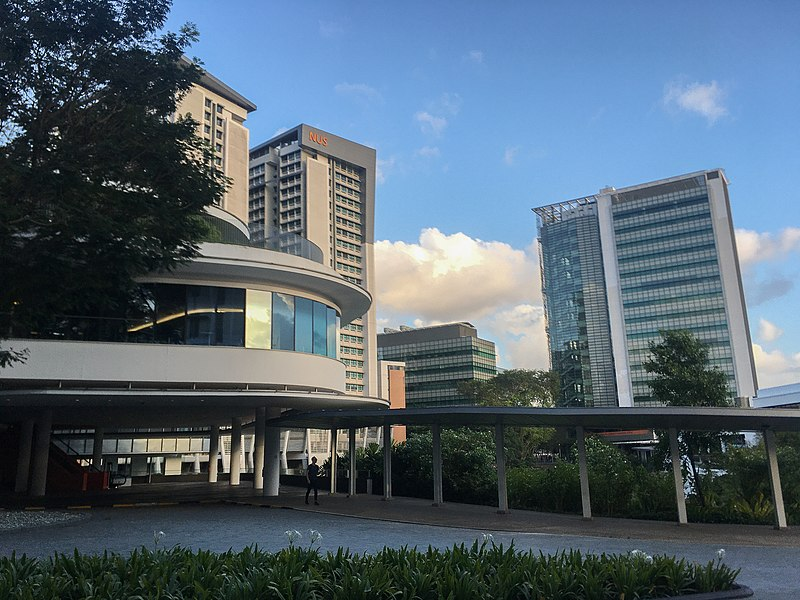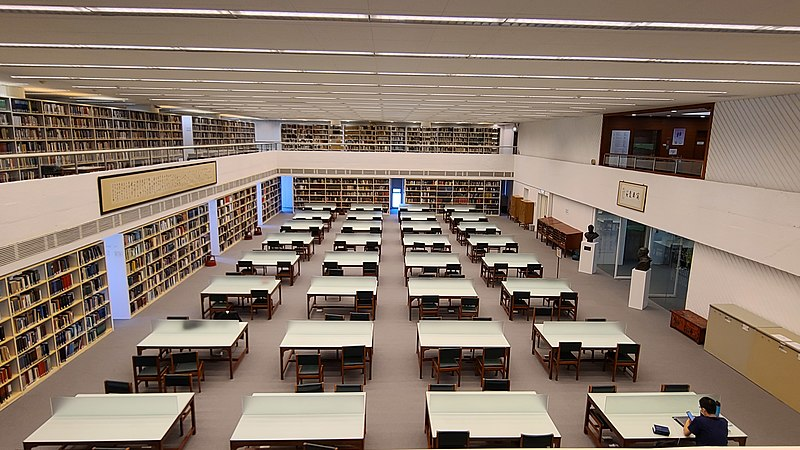Apply to a foreign university with confidence
- Properly fulfilled documents
- Perfect motivation letter
- Support from a personal mentor
- Offers from several universities
Article score: 4.5 out of 5 (2 reviews)
Universities in Asia are gaining popularity and rising to the top positions of international rankings. In this article, we will explain why this is happening and discuss the best universities in the region.
Free consultation
For many years now, universities in Asia have been in serious competition with recognized leaders from the USA and Europe. The latest university rankings confirm that universities in China, Singapore and South Korea are climbing to the top, while the universities in the UK, USA and Europe are beginning to lose ground or have dropped from the list altogether[1].
Asian universities place particular value on research and innovation. At the same time, the results of the research process are still in the laboratories; universities cooperate with large companies and contribute to the economy and social development of their countries with their research.
Asia is a destination for ambitious, hardworking and diligent students. To overcome the difficulties of admission and study, you must also be open to new things, sociable and disciplined.
The education standards in Asia are very high, and the expectations are set for students correspondingly. For example, all universities in Singapore expect students to have high academic performance, many extracurricular activities and achievements, preferably on an international level.
At the same time, Asia has a lot to offer in terms of interesting and strong programs. For example, I am currently in the process of helping a student apply for the Museum Studies major at HKU. Singapore offers many joint and double degree programs. Within one program, you can study business administration and engineering, economics and law, psychology and management.
Modern world requires us to have a wider range of specializations. You must have extensive knowledge in related disciplines, and Asia is keeping up with the times in this regard.

Items 1-6 of 11,187
Advanced searchWorld rankings such as ARWU, THE and QS place Asian universities at the top of their rankings. Most often, Chinese universities lead the way, but Singapore, Hong Kong, Korea and Japan are not far behind[2] [3].
The position of a university may vary depending on which ranking it is listed in. This happens because different criteria in THE, ARWU and QS rankings have different weights. For example, for QS, the reputation of a university among teachers and students is more important, ARWU values scientific achievements, and THE considers research papers and their citation index.
More about: World University RankingsTsinghua University's main campus is located in the former imperial gardens of the Qin Dynasty and is surrounded by historical sites of Beijing.
ARWU highlights Energy, Nanotechnology, Ecology and Computer Science among the best programs to study at Tsinghua University[6].
Tsinghua University students do more than study. They can choose from over 110 student clubs and organizations to join. For example, there are five facilities for athletes: a basketball and a volleyball court, a fitness center, a tennis court and a swimming pool[7]. Creative people can join a choir and orchestra, use conference rooms for events, visit a cinema and much more.
Statistics show that every student at Tsinghua University is a member of at least two clubs[8]. Yet, studying is always a priority: students have a busy schedule.

Peking University is one of the oldest universities in China. It is highly acclaimed for the quality of its education and for the beautiful traditional Chinese architecture of its campus.
Peking University’s courses are highly ranked by world subject rankings, in particular, Linguistics, Classical and Ancient history, Modern Languages and Archeology[12].
There are many extracurricular activities to choose from. Students can join over 200 organizations[13] and participate in annual events such as the Beida Cup Athletic Championships, a cultural festival or an international student singing competition[14].

The National University of Singapore (NUS) is the largest and most prestigious university of Singapore. Half of the current Singapore Parliament consists of NUS’s university graduates[16].
NUS places particular emphasis on research. The university has 40 research centers and labs[17], and the total funding of scientific projects amounts to 4 billion Singapore dollars[16].
NUS scientists and lab technicians explore a wide range of scientific fields in their work. For example, NUS researchers have invented a device to generate electricity from the air[18] and found new causes that trigger liver cancer[19]. Currently, a unique project is being researched and developed here: "Smart Nation". As part of this project, NUS researchers are studying data science, artificial intelligence and cybersecurity to improve Singapore's urban environment.
The highest-ranked programs here are Art History, Civil Engineering, Geography and Computer Science. Based on these subjects, QS[20] ranks NUS among the top 5 universities in the world. The university's MBA program is ranked 25th by the Financial Times[21].

The University of Hong Kong (HKU) is the oldest higher education institution in Hong Kong, with its history going back for more than a hundred years. Its most acclaimed fields are Dentistry, Education, Finance and Geography[23].
HKU’s researchers conduct cutting-edge research and solve global problems in fields ranging from financial technology to cancer treatment to climate change[24]. In 2003, the coronavirus was first discovered and studied here, long 17 years before the pandemic[25]. Now vaccines against it are being developed in university labs[26].
Hong Kong University students benefit from the latest technological advances in the classroom. For example, future archaeologists and nurses learn using virtual reality and 3D cameras[27].
HKU has 11 joint projects with Huawei and signed a future cooperation partnership agreement with the company's research center in November 2021[26].

At Nanyang Technological University (NTU), the rankings most highly value Media and Communications, Materials Science, Civil Engineering, Electrical and Chemical Engineering[29]. In addition, the university has a joint medical school with Imperial College London.
NTU is actively introducing digital technologies to improve both the educational process and the living conditions of students. This initiative is called Smart Campus. However, the NTU campus is not only a testing ground for the most advanced technologies; it is often called one of the most beautiful buildings in the world[30].
Indeed, NTU has everything students need: sports grounds, a swimming pool, and a quiet patio to relax with a book or meet friends. The university has its own museum that regularly holds exhibitions[31].

The University of Tokyo was founded in 1877 as the first university of the Emperor. This is the oldest and most prestigious university in Japan. Among its graduates are 8 Nobel laureates, 15 Japanese prime ministers and 5 astronauts[27].
29 000 students study at the University of Tokyo, with 5000 of them coming to study from other countries[27]. The University of Tokyo offers bachelor's programs entirely in English: "Japan in East Asia" and "Ecology and Environmental Sciences"[33]. The most highly acclaimed study fields are Physics, Chemistry, Geosciences, Oceanography, and Modern Languages[34].
The University of Tokyo students live by the motto of "work hard, play hard": their extracurricular activities are as varied as their educational program. The university offers a large selection of student clubs — or, as they are called here, “Inkare” — sports teams and student associations. There are several choirs, flamenco lessons, photography, calligraphy and floristry club[35].

The Chinese University of Hong Kong (CUHK) opened its doors in 1936. Since then, it has been an important player in the field of international education and conversation between China and the West.
Among the strongest fields of study offered by CUHK are Nursing, Media and Communications, Linguistics, and Sociology[37]. Aside from specialized disciplines, university students study general education subjects to widen their academic reach and learn to analyze problems from different points of view[38].
Following a common approach in Asia, the Chinese University of Hong Kong places heavy emphasis on research. There are four main research streams:

| Country | South Korea |
| City | Seoul |
| THE[40] Asia ranking | 11 |
| QS[10] Asia ranking | 6 |
| ARWU[11] world ranking | 94 |
Seoul National University is part of the prestigious SKY group, the Korean equivalent of the Ivy League. Its strongest study fields are Engineering, Modern Languages, Material Sciences, Sports, Data Science and Artificial Intelligence[41].
Four principles guide teaching, research and student life at SNU:
Seoul National University consists of 15 colleges and 9 graduate schools. Within them, students can choose interdisciplinary or double major programs. SNU has more than 250 partner universities around the world, including the University of Pennsylvania and the University of California[42].

| Country | South Korea |
| City | Daejeon |
| THE Asia ranking[43] | 17 |
| QS Asia ranking[10] | 13 |
| ARWU world ranking[11] | 200 |
KAIST was South Korea's first research-based science and technology university. It opened its doors to students in 1971[44].
For such a young university, KAIST has been growing amazingly fast. Its main focus is, of course, research.
For example, in 2015 the researchers at KAIST developed the humanoid robot HUBO[45]. It can walk, recognize speech and make gestures with all five fingers. In 2020, it was used for the first time as a news presenter[46]. In 2023, the university invented a needle that softens from body heat, thus allowing for more effective injections and fewer cases of reusing the needles[42].
The strongest fields of study here are Nanotechnology, Mechanical Engineering, Energy, Chemistry and Biomedical Technologies[47].
Although extra-curricular activities on campus are not the first priority at KAIST, the university has a variety of student clubs, societies[48] and events for students to enjoy. For example, there are classical music concerts, movie screenings and ballet[49].

The story of Fudan University began in 1905. The name of the university comes from two Chinese characters: fù meaning "return" and dàn as “dawn”[51].
Fudan is part of the elite association C9, the Chinese Ivy League. Fundan’s strongest study fields, according to QS, are Modern Languages, Linguistics, Classical and Ancient History, and Political Science[52].
Almost 4000 foreign students from all over the world study at Fudan University[51]. Local and international students alike can choose from many extracurricular activities and student clubs: archery, diving and even a detective club, where students read detective stories, discuss and investigate them[53].
In addition, there are associations of students of different nationalities, from Thai to Russian[53]. With them, Fudan has every chance of becoming your "home away from home".

First, research each university individually. There is no universal list of documents and requirements even within one country, let alone an entire region.
Here are a few key points to consider for each country.
Documents that confirm previous education should be legalized to be admitted to all Asian countries. China has recently joined the Hague Convention and will require an apostille instead of consular legalization[54]. Documents should also be translated into English or the national language and notarized.
In most cases, you will require the following to be admitted to a university in Asia:
You can apply to a Korean university after completing secondary education (11 or 12 classes depending on your country). No additional foundation programs are required.
Often, a confirmation of your country of origin is required by a university. This requirement can be fulfilled by providing copies of the passports of the applicant and their parents.
Certificates and other proof of achievements will also be useful. This could be academic olympiads, conference participation, volunteering, and so on.
More about: Admission process in South KoreaYou can apply for study at a Japanese university after completing secondary education (11 or 12 classes depending on your country). Admission to a Japanese university often requires foreigners to take a unified exam EJU and JLPT for language assessment.
Every university independently chooses the entrance examination format. In addition to EJU and JLPT, this could be:
If you are planning to study in Japanese, you can first complete a foundation program. They are often aimed at learning Japanese and EJU preparation.
To study in English, an IELTS/TOEFL certificate or SAT results are sufficient.
More about: Admission process in JapanThe main requirements for admission to a Chinese university are quite standard: high grade point average score, language proficiency exam results, and a motivation letter. Top universities will also require recommendations, a health certificate and a criminal record check. Internal examinations are also conducted.
Among the special conditions for admission is age. For Chinese universities, it’s not enough to be smart; you also need to be young.
You can enter university immediately after graduating high school, but you must be 18 years old when you start your studies. At the same time, many universities also set upper age limits: 24 years for a bachelor’s degree, 40 years for a master’s degree.
More about: Admission to a university in ChinaMany Singapore universities do not accept students after grade 11, even if this is your final year of high school. To be admitted, you will have to pass entrance exams or complete the Foundation program.
The National University of Singapore accepts students after 11th grade, but only with an excellent grade score, SAT exam results, and a completed Advanced Placement program. Admission to NTU is based on internal examinations.
In addition, most graduate programs require GRE/GMAT scores and conduct interviews.
More about: Admission to SingaporeSecondary school students in Hong Kong study for 12 years. Therefore, not all universities accept students who have completed 11 years of secondary education. For example, students from Russia and the CIS need to study for a year at a university in their home country or take A-Levels.
Yet, there are exceptions. For example, the Hong Kong University of Science and Technology and the University of Hong Kong accept diplomas of students with 11 years of secondary education, but with a GPA of 4.5 or higher and excellent state exam results.
Some faculties conduct admission interviews.
More about: Studing in Hong Kong60+ countries
we work with
$1,000,000 saved
by students through scholarships
6,400 offers
our students got